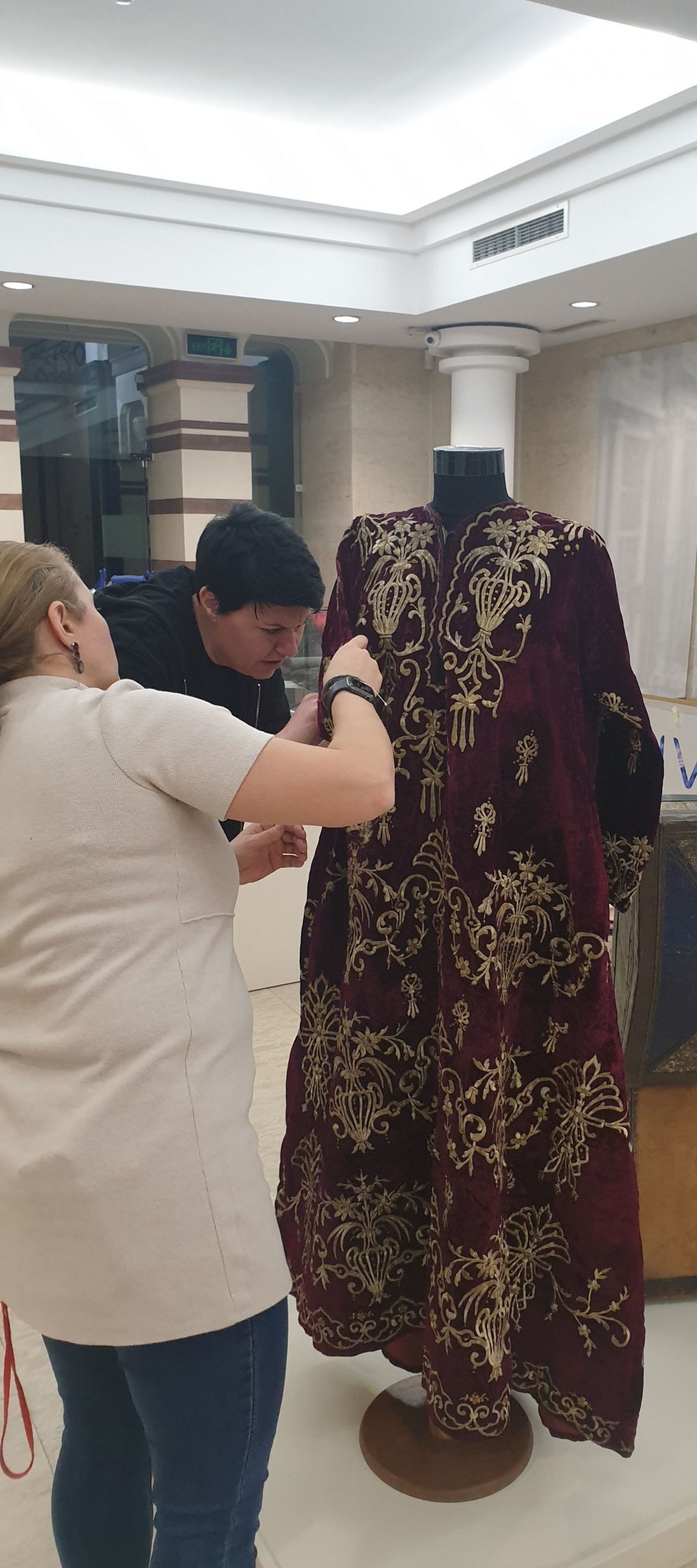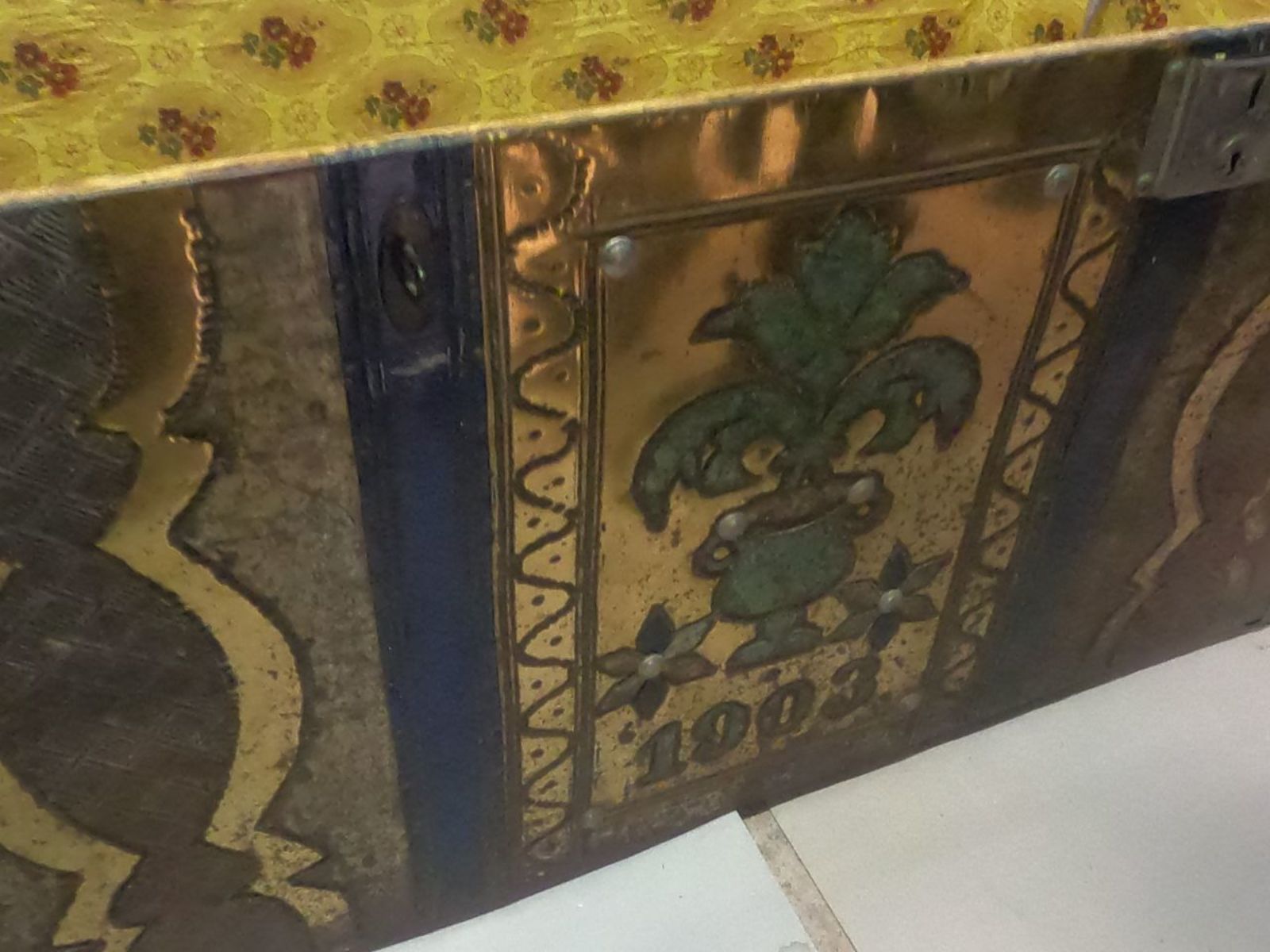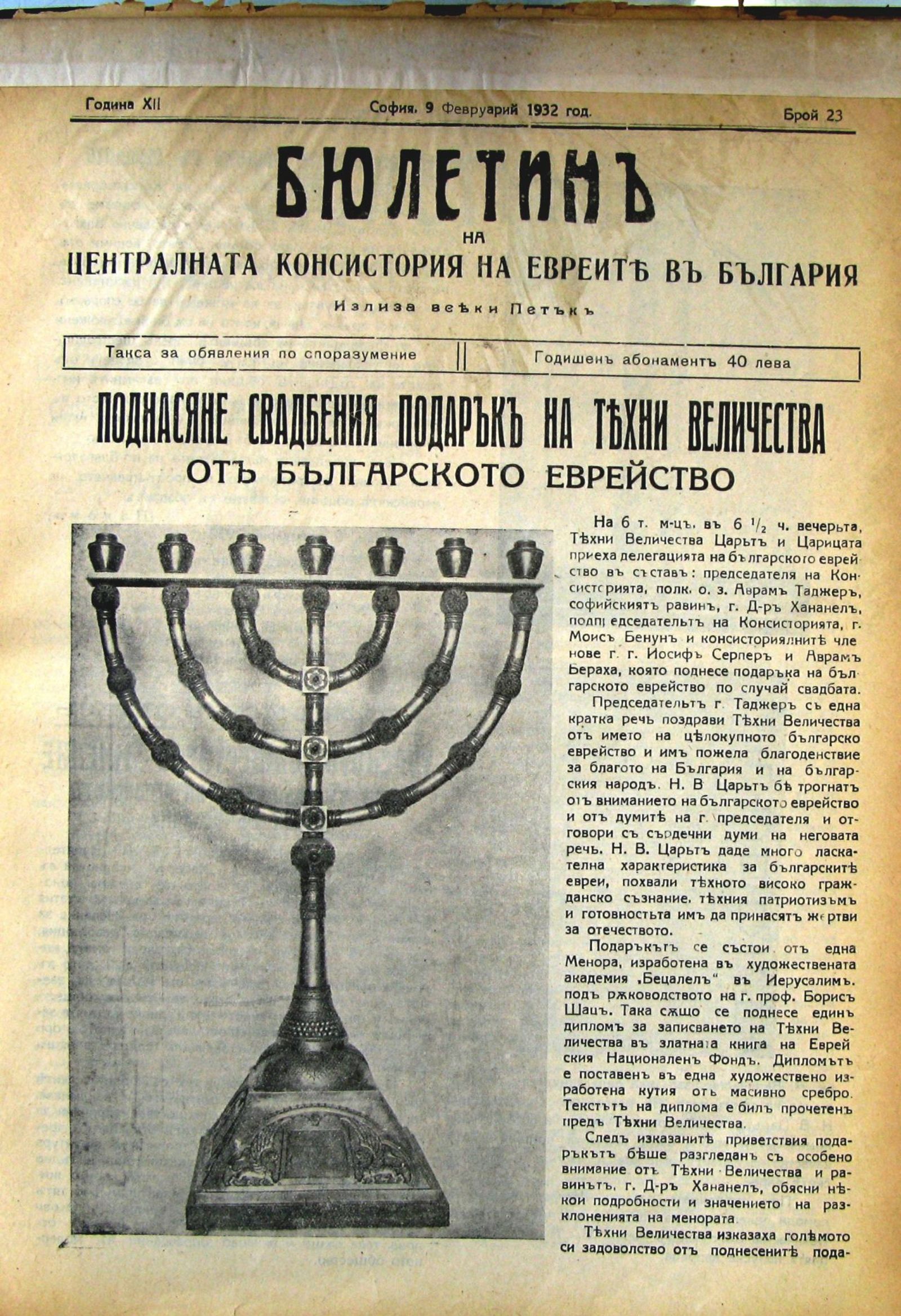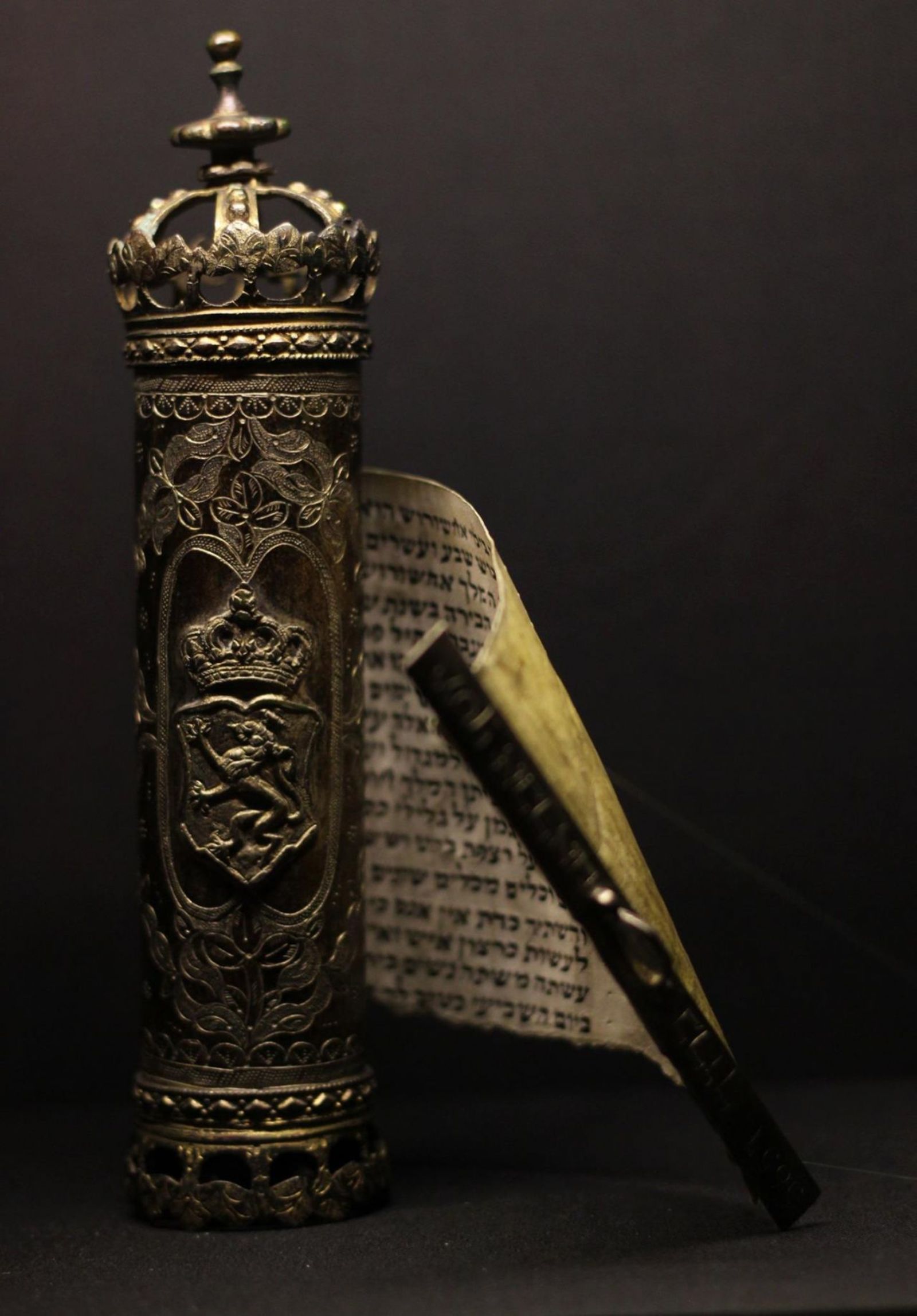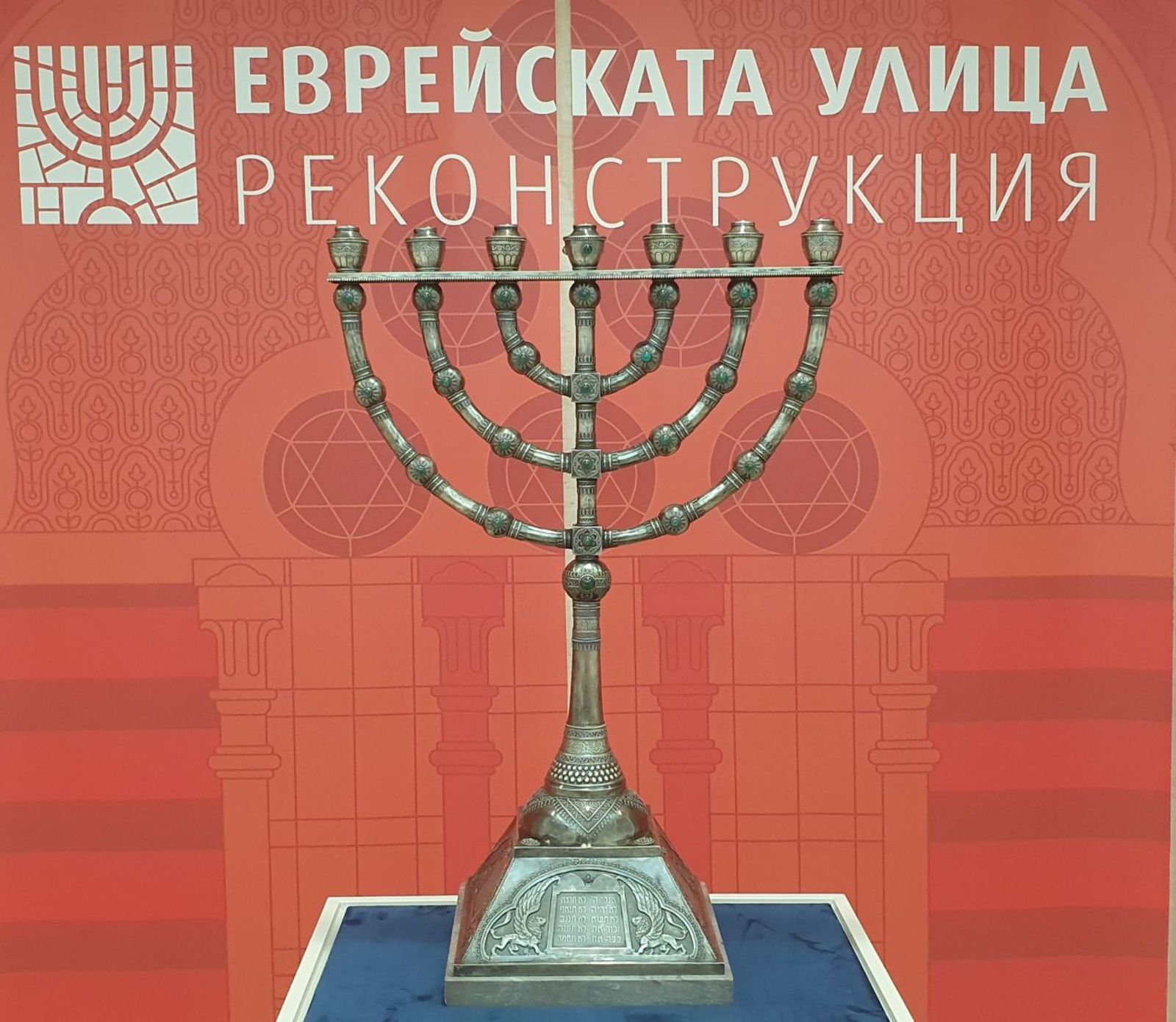The festive cycle

The menorah and Megillat Esther displayed are from the stores of the Regional History Museum - Sofia.

Information about the menorah was published in the Bulletin of the Consistory in 1932, as well as in Avram Tajer's book ‘Historical Notes on Jewry in Bulgaria and the Municipality of Sofia’. Tajer reports that a delegation made up of Colonel Avram Tajer, Chairman of the Consistory, Dr. Hananel, Rabbi of Sofia, Moises Ben Navon, Joseph Serpir and Aaron Beraha visited their majesties the king and queen at 6.30pm on 6 February 1932 and presented them with a gift from the Bulgarian Jews on the occasion of their wedding - a menorah and a diploma. It is specially noted that the menorah was made at the Betzalel Academy of Arts in Palestine under the leadership of Professor Boris Schatz - one of the founders of the Academy of Arts in Sofia.
In this exhibition, the Historical Museum - Samokov presents a richly decorated chest and dress with tinsel embroidery.

The chest was gifted in 1903 to Ljubitsa and Dimitar Yonchevi on the occasion of their wedding. Dimitar Zafirov Yonchev (17 May 1879-22 October 1936) was a bank clerk who in 1903 married Lyubitsa Dimitrova Ivanova (2 February 1883-16 May 1959), breadwinner of the family of Hadji Zafir Hadjimitov and Hadji Mariola.
In 2018, Elka and Rositsa Yonchevi donated the beautiful chest to the Historical Museum in Samokov.
The chest was made by Leon Betzalelov, who had a shop at 86 Targovska Street in Samokov. According to the Family Register of the Samokov Jewish Municipality, the first representative of the Betzalel (Besalel) family was Nisim, born in 1834, married to Bohora (1839). The last wedding entered in the register is that of Moshe (1899) and Devorah (1899) Bezalel. The family name is entered in the register for nine marriages.

Festive Jewish dress. The rich tinsel embroidery is often known as “bindali” (thousand branches). In Jewish tradition, a "bindali" is a dress that every Jew gave to his wife on the birth of his first-born son.

The beautiful Megillat Esther is described in museum records as a gift to Joseph Avram Baruch from his fiancée, 1897.
Megillat Esther (The Scroll of Esther) is the 21st book of the canonical Hebrew Bible and refers to the Scriptures. In Jewish tradition, the book of Esther is the last of the Five Scrolls. (The Persian King Ahasuerus arranges a seven-day feast in the capital Susa. Due to the refusal of his wife, Queen Vashti, to show her beauty to the people, Ahasuerus chooses a new wife - Esther. Together with her uncle Mordechai, Esther learns that the royal adviser Haman is preparing an attack on Ahasuerus. Esther warns the king and Mordecai refuses to bow down to Haman. This refusal angers Haman and he plots the destruction of the Jews in Persia. Despite all these trials, Esther and Mordecai prevent the extermination of their people. In memory of this day, Mordecai and his niece Esther created the Purim holiday. The name of the holiday comes from the Akkadian word pur - lot). Special cylindrical cases of silver, wood or ivory are made for the scroll. They depict scenes from the book.
